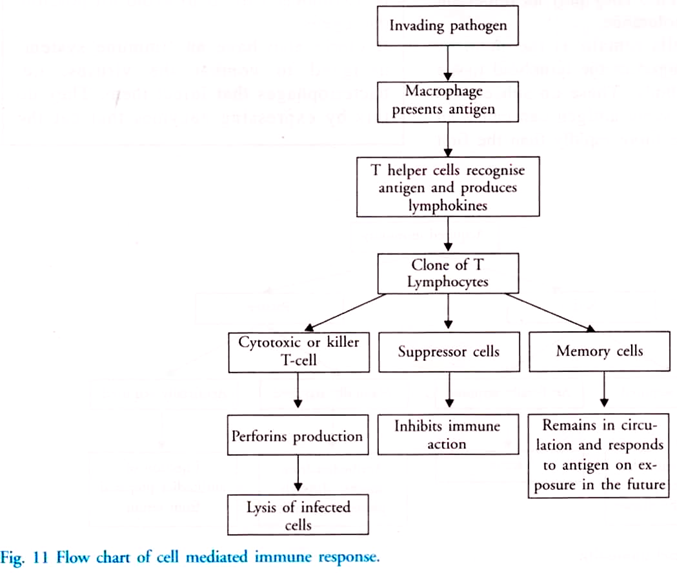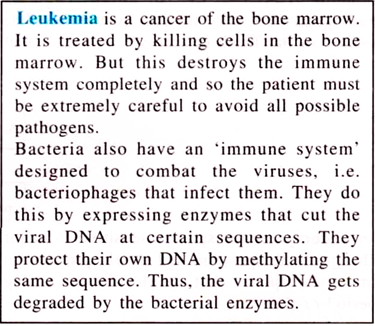ADVERTISEMENTS:
An immune response is a two-way assault on a pathogen – the cell mediated immune response and the humoral immune response.
Cell Mediated Immune Response:
Cell mediated immune response is carried out by the T-cells or T lymphocytes (Fig. 11). So, it is also called T-cell immunity. This type of immune response is to defend against pathogens that may invade host cells. The surface of the T-cell has receptor molecule that can bind with antigens. These receptor molecules are made of a variable unit similar to the variable portion of the humoral antibody. A single T-cell has about 100,000 receptor sites.
When an antigen enters the body, the macrophages first attack the antigen and fragment it into pieces. It then presents a piece of antigen to the T-helper cells. The T helper cells recognize the antigen and trigger off a series of cell mediated response. A clone of T-lymphocytes is first formed after being activated by the T-helper cells. There are different kinds of T-cells, which are morphologically similar but differ functionally.
ADVERTISEMENTS:
The actions of the different types of T-cell are summarised below:
a. Helper cells react by producing small peptide molecules called lymphokines. The lymphokines promote proliferation of more T-cells, stimulate B cells to produce antibodies and also help in accumulating macrophages in the inflamed tissues and by promoting phagocytosis.
b. Cytotoxic cells or Killer cells kill cells infected by viruses, cancerous cells and transplants.
ADVERTISEMENTS:
c. Suppressor cells, the third type of T-cells produce lymphokines that suppress the action of the phagocytes and the different types of WBC cells. They play an important role in immunotolerance.
d. Some of the cells remain as the memory cells that get lodged in the lymphoid tissue throughout the body. These on subsequent exposure to the same antigen can cause an immune response more rapidly than the first exposure.
Humoral Immune Response:
Humoral immune response is also called B-cell mediated immunity because B-lymphocytes are involved in this response. Humoral immune response is to defend the body against pathogens that may invade body fluids or humor. B cells are antigen specific.
During immune response, B cells, specific for the antigen, enlarge to become lymphoblasts that further differentiate to form plasma cells. The mature plasma cells produce gamma globulins or immunoglobulins called antibodies at a rapid rate of about 2000 molecules per second for each plasma cell. The antibodies secreted into the lymph eventually enter the blood.
The antibody molecule is the basic functional unit of this type of immune response. So this immune response is also called antibody-mediated immune response. The flow chart summarizes the various steps involved in the humoral response.


